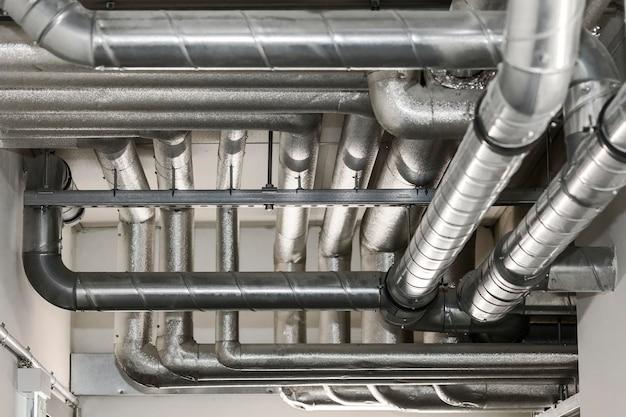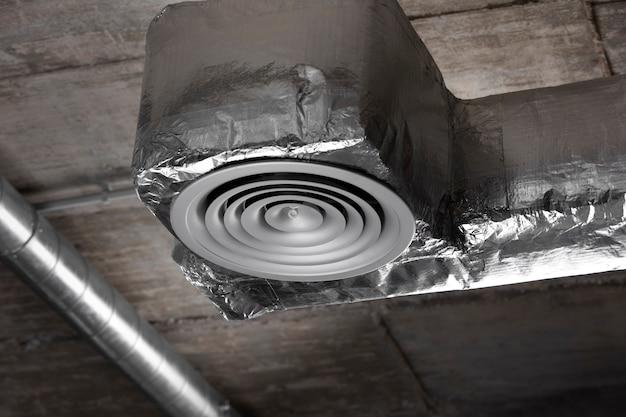As we head into 2023, it’s important to equip ourselves with the knowledge and skills to make our homes more energy-efficient. One aspect that often gets overlooked is the insulation of ductwork in the garage. Whether you’re using your garage as a workshop, storage space, or even a home office, insulating your ductwork can have a significant impact on energy savings and climate control.
In this blog post, we will explore the various aspects of insulating ductwork in the garage and address common questions such as whether you can insulate around ductwork, the type of insulation suitable for ductwork, and the importance of insulation. We’ll also delve into topics like running ductwork through a garage, using spray foam insulation, and the need for insulation in conditioned spaces. Additionally, we’ll touch on related subjects like the benefits of insulating ductwork, managing sweat ducts, and the impact of ductwork on drywall.
So, if you’re ready to boost the energy efficiency of your garage and enhance comfort levels, let’s jump in and learn how to properly insulate your ductwork!
How to Insulate Ductwork in Your Garage
Understanding the Importance of Insulating Ductwork
If you’re like most homeowners, the prospect of insulating your garage’s ductwork might not be at the top of your to-do list. However, taking the time to properly insulate your ductwork can bring a host of benefits. Not only does it help regulate the temperature in your garage, but it also reduces energy loss, saves you money on heating and cooling bills, and minimizes the potential for condensation and moisture buildup. So, let’s dive into the world of ductwork insulation and discover how you can make your garage a more comfortable and energy-efficient space!
Evaluating Your Garage’s Ductwork
Before you begin the insulating process, it’s important to evaluate your garage’s ductwork. Start by checking for any leaks or gaps in the ducts that may need to be sealed. You can use foil tape or mastic sealant to cover up these areas and ensure your insulation efforts are not in vain. Additionally, make sure there are no obstructions blocking the airflow and that the ductwork is properly supported to prevent sagging or damage.
Choosing the Right Insulation Material
Now that you’ve assessed your ductwork, it’s time to choose the right insulation material. There are various options available, but for garage ductwork, it’s best to opt for insulation with a higher R-value. R-value measures the insulation’s resistance to heat flow, so the higher the R-value, the better it will insulate your ductwork. Popular choices include fiberglass insulation, foam insulation, and reflective insulation. Each has its pros and cons, so consider factors like cost, ease of installation, and effectiveness before making a decision.
Installing the Insulation
Once you’ve settled on the right insulation material, it’s time to roll up your sleeves and get to work! Start by cleaning the duct surfaces to ensure proper adhesion. Then, carefully cut the insulation to the required length and wrap it snugly around your ductwork. Use tape, adhesive, or mechanical fasteners to secure the insulation in place, paying extra attention to sealing any seams or joints. It’s crucial to cover every inch of the ductwork with insulation to maximize its effectiveness.
Additional Tips and Tricks
While insulating your garage’s ductwork, it’s important to keep a few additional tips in mind. First, make sure to insulate any exposed duct joints or fittings. These areas are prone to temperature leaks, and sealing them off will enhance your insulation efforts. Secondly, consider insulating the garage walls as well to create a more enclosed and insulated environment. This will further help in regulating temperature and reducing heat loss. Lastly, don’t forget to periodically check for any signs of damage or wear and tear to ensure your insulation remains effective over time.
Take the Leap and Insulate Your Ductwork Today!
Insulating the ductwork in your garage may not be the sexiest home improvement project, but its benefits are no joke. By taking the time to evaluate your ductwork, choose the right insulation material, and install it properly, you’re setting yourself up for a more comfortable, energy-efficient, and cost-effective garage. So, why wait? Grab your tools, put on your DIY cap, and get ready to tackle the task of insulating your garage ductwork. Your future self (and your wallet) will thank you for it!
Disclaimer: This blog post is for informational purposes only. Always consult a professional before undertaking any home improvement project.
FAQ: How to Insulate Ductwork in Garage
Can You Insulate Around Ductwork
Yes, you can definitely insulate around ductwork. In fact, it’s highly recommended to prevent heat loss and ensure energy efficiency in your garage.
Can You Put Fiberglass Insulation Around Ductwork
Absolutely! Fiberglass insulation is commonly used for insulating ductwork. Its thermal properties help to keep the conditioned air at the desired temperature.
What Type of Insulation is Used for Ductwork
There are various types of insulation suitable for ductwork. Apart from fiberglass, you can also opt for foam board insulation or spray foam insulation. Each has its own unique advantages, so choose one that suits your needs.
Why is Insulation Required for Ductwork
Insulating ductwork prevents energy losses, allowing your HVAC system to work more efficiently. It helps to maintain a consistent temperature throughout your garage and saves you money on energy bills in the long run.
Can You Run Ductwork Through a Garage
Yes, you can run ductwork through a garage. It’s a common practice, especially if your garage is attached to your home. However, insulating the ductwork becomes even more crucial in such cases to minimize heat transfer.
Can You Use Spray Foam Insulation on Ductwork
Absolutely! Spray foam insulation is a popular choice for insulating ductwork. It provides an airtight seal, preventing air leakage and minimizing heat exchange.
Does Ductwork Need to be Insulated in Conditioned Space
Yes, ductwork should always be insulated, especially when it runs through conditioned spaces like a garage. Insulation helps to maintain the desired temperature and prevents heat loss or gain.
Should You Heat Your Attached Garage
That depends on your needs and preferences. If you plan to use your garage as a workshop, office, or additional living space, heating it can enhance comfort. However, it’s essential to insulate the ductwork to ensure efficient heating and prevent heat loss.
What R-Value Do I Need for Ductwork
For optimal energy efficiency, it is recommended to have a minimum R-value of 6 for ductwork insulation. However, local building codes may specify different requirements, so it’s always best to check with your local authorities.
Is Insulated Ducting Better
Insulated ducting offers several benefits compared to uninsulated ductwork. It reduces energy losses, improves HVAC system performance, and helps maintain consistent indoor temperatures. Additionally, insulated ducting reduces noise transmission, making your garage a quieter space.
Does Exposed Ductwork Need to be Insulated
While exposed ductwork doesn’t necessarily require insulation, it can benefit from it. Insulating exposed ducts helps to prevent condensation, shields them from extreme temperatures, and reduces thermal losses.
How Do You Insulate Sweat Ducts
Sweating ducts occur when there’s a temperature difference between the cool duct surface and the warm air surrounding it. To insulate sweat ducts, you can use specialized insulation sleeves or wrap them with appropriate insulation material to minimize condensation.
Can Heating Ducts Touch Drywall
Ideally, heating ducts should not directly touch drywall. It’s important to maintain a gap between the ductwork and the surrounding walls to allow proper airflow and minimize heat transfer. You can use hangers or spacers to achieve this.
Do You Have to Insulate Metal Ductwork
Yes, insulating metal ductwork is essential to avoid heat loss or gain. Metal conducts heat quickly, making insulation necessary to maintain optimal HVAC system efficiency and prevent temperature fluctuations in your garage.
Is Insulating Ductwork Worth It
Absolutely! Insulating ductwork is definitely worth it. It improves energy efficiency, reduces heat loss, enhances comfort, and saves you money on heating and cooling costs in the long term.
How Do You Vent a Garage
Proper garage ventilation is crucial to remove odors, smoke, and excess heat. You can install exhaust fans, ridge vents, or gable vents to facilitate air circulation and maintain good indoor air quality.
Is a Mini Split Good for a Garage
A mini split system can be a great choice for heating and cooling your garage. It offers precise temperature control, energy efficiency, and flexibility in installation. However, ensure proper insulation of the ductwork or refrigerant lines for optimal performance.
How Much Does It Cost to Rewrap Ductwork
The cost of rewrapping ductwork can vary depending on the size of your garage and the type of insulation material you choose. On average, you can expect to spend around $2 to $4 per linear foot for professional installation. However, it’s always best to get a personalized quote from HVAC professionals in your area.
Does Spiral Duct Need to be Insulated
Yes, it’s recommended to insulate spiral ductwork as well. Although spiral ducts have a smoother airflow compared to rectangular ones, insulating them helps maintain desired temperatures, prevents condensation, and improves energy efficiency.
In summary, insulating ductwork in your garage is not only beneficial for energy efficiency and cost savings but also essential for maintaining a comfortable and consistent indoor environment. By choosing the right insulation material and following proper installation techniques, you can enjoy the numerous advantages of insulated ductwork. So go ahead and reap the rewards of a well-insulated garage!

